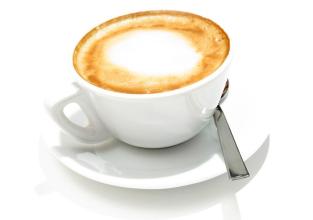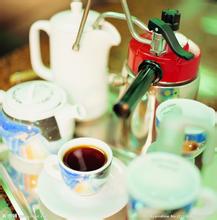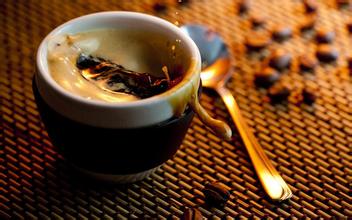Introduction to the flavor and taste of high-quality coffee beans in Dominica Coffee Manor
During the occupation of Haiti (1821-1844)
After Santo Domingo returned to Spanish rule, the local people gradually formed a consensus on independent statehood. On 30 November 1821, the former Governor of Santo Domingo, under the leadership of General Jos é N ú ñ ez de C á ceres, proclaimed statehood, named Haiti, Spain, and expected to merge under the Greater Colombian State led by President Bolivar of South America. [3]
But nine weeks later, in February 1822, the president of Haiti, Jean-Pierre Bouyer, occupied Spain and Haiti, and once again completed the reunification of the island. After Boyer occupied the eastern Spanish state of Haiti and liberated all the local slaves, Bouyer ordered the confiscation of the land of the white landlords and the complete return of the agricultural land of the whole country. Bouye also closed all universities, included all multinational (Dominican Republic for short) men between the ages of 18 and 25 in the army, and began to adopt a high-handed policy towards many countrymen. Many upper-class whites left the island and fled to Cuba, Puerto Rico and other areas. [3]
Bouye began to plant cash crops on the island, carry out tax reform and open up trade with foreign countries. Although these policies have greatly increased sugar cane and coffee production in Dominica, they are not widely accepted by farmers. Bouye thought that the liberation of many countries was a boon to many people, so he often did not pay any pay to Dominican soldiers in the army, and many soldiers began to rob local residents everywhere. This vicious circle eventually led to economic stagnation and heavier and heavier fiscal taxes, which led many people around the world, even the liberated slaves, to unite against the rule of Bouaye and overthrew the Bouayer regime in 1843. [3]
The first Independence (1844-1861)
On July 16, 1838, Juan Pablo Duvat and his colleagues established a
Dominica
Dominica
The secret society organization Trinity experience (La Trinitaria) aims to gain independence from the rule of Haiti. Soon after, Matthias Ramon Malia and Francisco del Rosario Sanchez joined the Trinity experience. All three were later called the founding fathers of the Dominican Republic. On February 27, 1844, the people of the Dominican Republic launched a war of independence against Haiti and declared the independence of the Dominican Republic at the same time. The constitution of the Dominican Republic, modelled on the Charter of the United States, was declared on November 6, 1844. In the decades after the independence of the Dominican Republic, its domestic economic and political ups and downs, from 1844 to 1856 was constantly attacked by neighboring Haiti, during this period can be said to be internal and external problems constantly. During the same period, Pedro Santana (commander-in-chief of the army in the early days of the Anti-Japanese War and later became the first, fourth and eighth president) and Buenaventura Baez participated in the War of Independence. (he has been elected as a multinational president five times). The two men were headstrong and unyielding to each other when they came to power. Santana firmly believed that Dominica must be attached to the umbrella of the Spanish Empire in order to avoid the aggression of Haiti. After hoping that France's plan to defend Dominica failed, Baez turned to hope that Dominica could be incorporated into the United States, and finally failed.
The name Dominica, which originally means "Sunday", was taken by Columbus when he first came to America to discover it, because it happened to be a Sunday. This seemingly random name seems to be far-sighted today, because a good cup of coffee can bring people a relaxed and enjoyable mood, which is how we yearn for weekends after a busy week. Turning to the introduction of Dominican coffee, the most distinctive features are fresh and elegant, full of particles, excellent acidity and pleasant flavor (two colleagues agree with this). Such flavor characteristics are not only related to varieties and soil quality, but also closely related to the picking and handling of raw beans. Coffee in Dominica is selected by the manual method with the highest cost, and workers mainly consider the fullness of coffee granules and the uniformity of coffee granules. According to these conditions, the coffee beans with the fullest and most uniform grains can represent the best quality in Dominica. The finest coffee. And only choose the washing treatment method to ensure the high quality and stability of coffee beans. The coffee beans treated with water washing method taste cleaner and exude a touch of pure and soft fragrance, which can make people feel a faint fruity aroma and a winding aftertaste. Smooth and smooth Dominican coffee is also slightly different in taste according to the altitude of the planting region, and the taste of the highland is slightly sour, but the taste is rich. The lowland is less sour and tastes smoother. On the other hand, the high-quality coffee beans produced by some Dominican estates have a rich aroma, mellow taste and moderately bright sour taste. Compared with the famous coffee beans in Puerto Rico or Jamaica, the mild climate in Dominica is conducive to the cultivation of coffee. The best places to grow coffee are the Barahona region in the southwest and the Cibao Valley north of Santiago, Dominica's second largest city. The northern region, represented by Hibao, and the southern region, including Okayabani Santo Domingo, produce good coffee. Among them, the coffee produced by Santo Domingo and Barney is famous all over the world, which is almost synonymous with domiga coffee.

Important Notice :
前街咖啡 FrontStreet Coffee has moved to new addredd:
FrontStreet Coffee Address: 315,Donghua East Road,GuangZhou
Tel:020 38364473
- Prev

Pure and aromatic Puerto Rican Coffee Manor flavor and taste characteristics of boutique coffee
Puerto Ricans are the general name of the residents of United States Puerto Rico in Central America and the Caribbean. There are about 3.4 million people (1979). Spanish and English are widely used. More Catholic. The earliest inhabitants of Puerto Rico were Arawak and Caribbean Indians. In 2012, whites of European origin accounted for about 73% of the population, mixed-race people accounted for 23%, and blacks accounted for 4%. There are more than 20,000 Americans and others.
- Next

An introduction to the flavor and taste characteristics of the Sidamo Shakiso Coffee Manor with endless aftertaste
Xidamo Village is located in the low mountain valley slope, 659 meters above sea level. The mountain field is vast, the land is mountain leaching cinnamon soil, the vegetation is luxuriant, the woodland area is 10 square kilometers, there are many biological species, only hundreds of plants. The most important feature of Sidamo Village is that the rivers in the village continue to flow all the year round, which is relatively rare in the northern mountains. The formation of Sidamo Village is also related to this unique natural conditions.
Related
- Detailed explanation of Jadeite planting Land in Panamanian Jadeite Manor introduction to the grading system of Jadeite competitive bidding, Red bid, Green bid and Rose Summer
- Story of Coffee planting in Brenka region of Costa Rica Stonehenge Manor anaerobic heavy honey treatment of flavor mouth
- What's on the barrel of Blue Mountain Coffee beans?
- Can American coffee also pull flowers? How to use hot American style to pull out a good-looking pattern?
- Can you make a cold extract with coffee beans? What is the right proportion for cold-extracted coffee formula?
- Indonesian PWN Gold Mandrine Coffee Origin Features Flavor How to Chong? Mandolin coffee is American.
- A brief introduction to the flavor characteristics of Brazilian yellow bourbon coffee beans
- What is the effect of different water quality on the flavor of cold-extracted coffee? What kind of water is best for brewing coffee?
- Why do you think of Rose Summer whenever you mention Panamanian coffee?
- Introduction to the characteristics of authentic blue mountain coffee bean producing areas? What is the CIB Coffee Authority in Jamaica?

